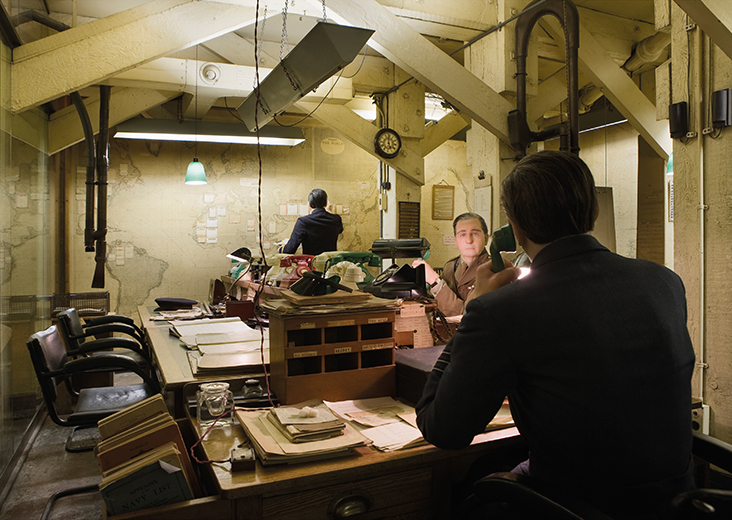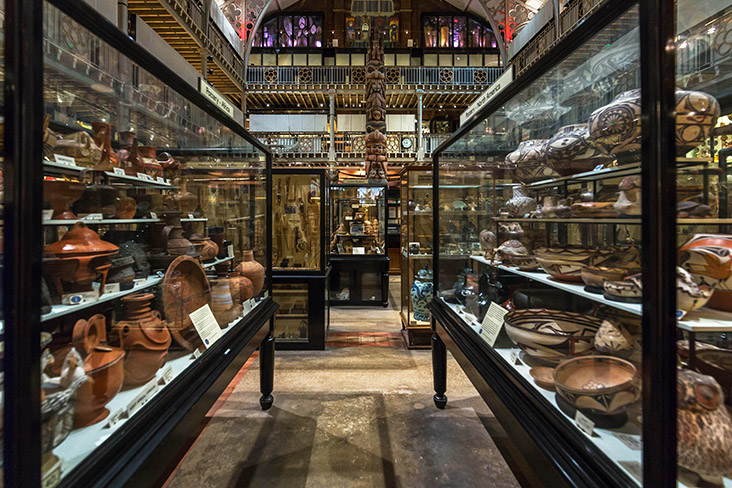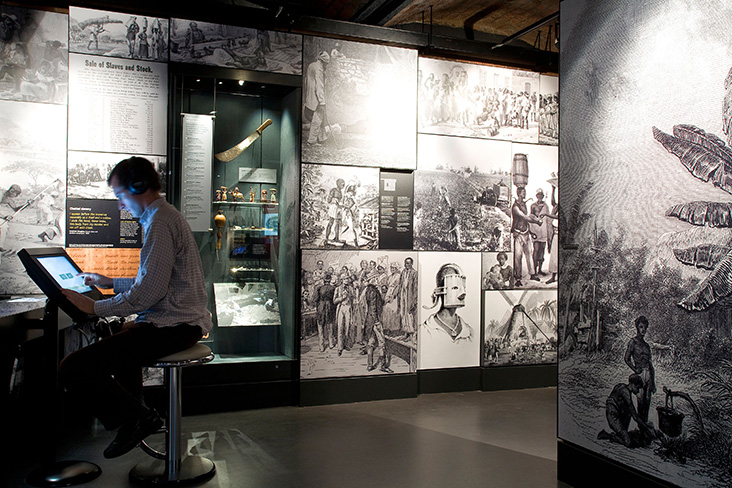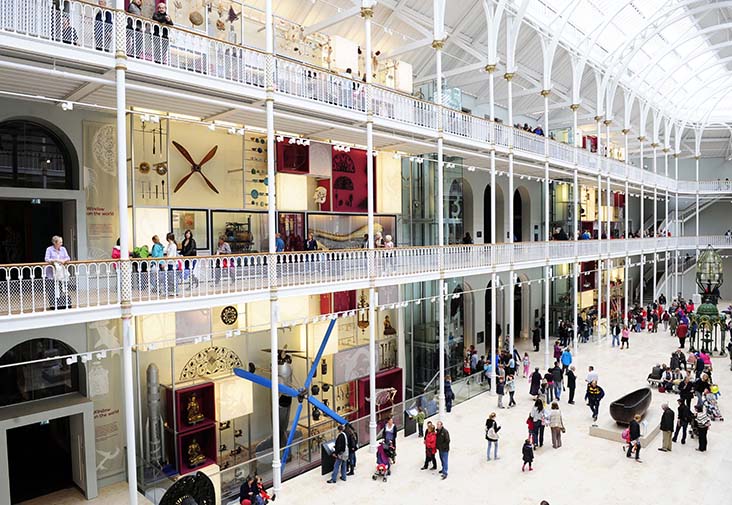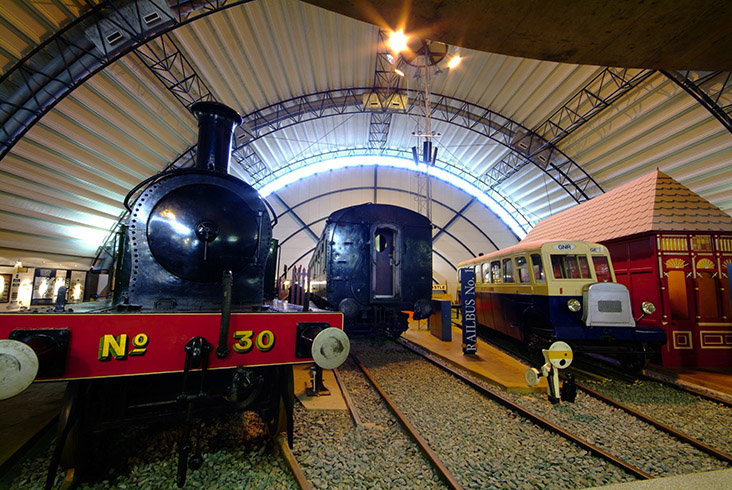Rough Guides author Mandy Tomlin explores some of the most quirky and unusual museums around the country. Check out her favourite places below, all of which are accessible and welcoming to those with special needs and disabilities.
Southwest: Discover Dorset’s dinosaurs at The Etches Collection, Kimmeridge
Dorset’s Jurassic coast is well-known for its amazing fossil finds – and in 2018 the county is home to Dippy the Diplodocus, formerly in the entrance hall of London’s Natural History Museum; it’s on display in Dorchester’s Dorset County Museum until May. Plus David Attenborough’s Sea Dragon can be seen in the Charmouth Heritage Centre for the rest of the year. However, it’s at the permanent Etches Collection in the tiny village of Kimmeridge that you can really get to grips with the subject by exploring its huge collection of fossils – more than 2000 have been amassed from the local area over the past 30 years. In a brand new building, the light and airy museum has level access to the ground floor with a glass lift to the upper exhibition floor, and all the staff also have dementia-friendly training – for further information see the access statement.
The Map Room at the Churchill War Rooms, the hub of military strategy during World War II
London: Follow in Churchill’s footsteps at Churchill War Rooms, London
If you’ve been inspired by this year’s hit film The Darkest Hour, visit the real-life venue where Churchill made his vital decisions that changed the course of World War II. Explore the fascinating underground bunker where government staff worked and lived during the war, including Churchill’s bedroom, the Cabinet War Room and the prime minister’s personal belongings, such as his paintings, cigars and vast overalls. There’s lift access to the basement museum, which is accessible throughout and wheelchairs are available to borrow, though as the museum gets very busy at times, they recommend visiting on week days to avoid the crowds.
Exhibition cases at the weird and wonderful Pitt Rivers Museum
Midlands: Marvel at the fascinating and downright odd collection at the Pitt Rivers Museum, Oxford
One of the world’s finest ethnographic museums, this quirky collection of artefacts displays just about everything from shrunken heads and ethnic blowpipes to knuckledusters and ancient tattooing equipment. Founded in 1884, the Pitt Rivers Museum contains more than 20,000 archeological and anthropological objects gathered by Augustus Pitt-Rivers who donated his vast collection to Oxford University. At first sight, the cluttered dimly-lit museum filled with traditional display cases doesn’t seem very promising for those with limited mobility, but there’s a Highlights Trail around the museum which is suitable for wheelchair users, magnifying glasses and torches are free to borrow, while friendly staff and an informal atmosphere help visitors with learning difficulties to enjoy the exhibits. There’s a thorough access guide on their website.
A thought-provoking exhibition at Liverpool’s International Slavery Museum
Northwest: Prepare to be chilled and challenged at the International Slavery Museum, Liverpool
Located on the third floor of a converted warehouse in Liverpool’s bustling Albert Dock, this intriguing museum tells the horrific story of slavery in Liverpool while exploring contemporary issues of freedom, equality and racial injustice. The three main galleries at the International Slavery Museum cover life in West Africa; the horrendous and inhumane journey to the American plantations; and the Legacy exhibits, featuring African music and prominent African achievers. There are ramps and lift access to all floors of the museum, with Braille and audio guides available, and guide/hearing dogs are welcome. There’s an access guide and sign-language video guide with further information.
The light and spacious Grand Gallery at the National Museum of Scotland
Scotland: Explore all aspects of Scottish history and culture at the National Museum of Scotland, Edinburgh
Design, fashion, a human hamster wheel, the Lewis Chessmen and Dolly the sheep can all be seen in this vast museum covering Scottish history from the early days to contemporary life. Marvel at the variety of exhibits in the National Museum of Scotland, which range from dinosaur skeletons and pieces of meteorite to the world’s oldest colour television, the coffin of an Egyptian priest and clothes by the likes of Vivienne Westwood and Jean-Paul Gaultier. The fully-accessible museum has a range of initiatives for those on the autism spectrum including sensory back-packs to borrow, detailed information on the museum and communication cards that can be downloaded from the website before visiting, plus early doors and after-hours sessions for those who find crowds challenging.
Wales: Learn all about the history of Wales at the National Waterfront Museum, Swansea
In an impressive former brick warehouse with a modern wing on Swansea’s dockside, this museum uses plenty of interactive technology to teach visitors about the history and culture of Wales. Exhibits at the National Waterfront Museum cover a wide range of subjects, including a replica of Trevithick’s steam engine and a traditional coal wagon. The museum is fully accessible, and the lifts have Braille buttons and audio announcements: there’s an accessible toilet and changing room and audio descriptive tours can be arranged if booked in advance.
A beautiful old steam engine at the Transport Museum’s railway gallery
Northern Ireland: Check out one of Europe’s largest transport collections at the Ulster Folk & Transport museum
The Ulster Folk and Transport Museum is two exceptional museums in one. At the folk museum, experience what life was like in Northern Ireland a hundred years ago, with original and replica buildings including a weaver’s cottage, a forge and a mill spread out over parkland with costumed staff demonstrating various traditional crafts and skills. The transport museum, meanwhile, houses a vast collection of vehicles from full-size steam engines, horse-drawn carriages, a racing bicycle, a replica monoplane and DeLorean cars. Whilst the outdoor folk museum has cobbled streets, hills and steps into some of the buildings, which may be tricky for wheelchair users, the indoor transport museum has flat access with ramps or lifts inside. Wheelchairs and mobility scooters can be borrowed if booked in advance and visitors with access needs and their carers get free admission. See the website or further access information at the two museums.
Related articles
6 accessible ideas for spring 2018 – link when article is live
Top wheelchair and scooter friendly towns across the UK
7 free accessible things to do in the UK
The world’s most accessible places to visit
Image credits
Header: Grand Gallery at the National Museum Scotland: © National Museums Scotland
Churchill War Rooms, London: © IWM/Richard Ash
Pitt Rivers Museum: © Pitt Rivers Museum/Ian Wallman
International Slavery Museum, Liverpool: © Alamy / Hemis
Grand Gallery at the National Museum Scotland: © National Museums Scotland
Ulster Folk & Transport Museum: NITB
![]()
